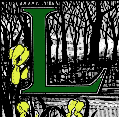 ike Achilles, like Aeneas, like Dante, Arthur is granted contact with the dead in this encounter with the ghost of the faithless Gawain; and like Tennyson himself in the ninety-fifth In Memoriam Iyric, that contact with the dead acts to confirm a faith, and hence comes as a reward for enduring severe spiritual trial. Although there are other events which resemble dreams in this surrealist idyll, this is the last literal dream we come upon in the poem. It should remind us how Tennyson has previously employed dreams and visions throughout The Idylls of the King. They not only add an element of the marvellous appropriate to the Romance subject, but they also provide opportunity for him to employ his great talent at creating panels, tapestries, and brief set-pieces of symbolic statement which further the action and restate the main themes. For example, the prophetic dreams of Merlin, Elaine, Tristram, and Guinevere all serve to warn of coming disastrous effects of breaking faith, while simultaneously directing our attention to the poet's ideas about the ambiguous nature of reality. Leodogran's dream, which provides the climactic moment in "The Coming of Arthur," further serves to effect the monarch's conversion to the cause of the young king. Like those waking visions alluded to in "The Holy Grail," Arthur's dream in this last idyll comes as a reward for his faith and faithful action.
ike Achilles, like Aeneas, like Dante, Arthur is granted contact with the dead in this encounter with the ghost of the faithless Gawain; and like Tennyson himself in the ninety-fifth In Memoriam Iyric, that contact with the dead acts to confirm a faith, and hence comes as a reward for enduring severe spiritual trial. Although there are other events which resemble dreams in this surrealist idyll, this is the last literal dream we come upon in the poem. It should remind us how Tennyson has previously employed dreams and visions throughout The Idylls of the King. They not only add an element of the marvellous appropriate to the Romance subject, but they also provide opportunity for him to employ his great talent at creating panels, tapestries, and brief set-pieces of symbolic statement which further the action and restate the main themes. For example, the prophetic dreams of Merlin, Elaine, Tristram, and Guinevere all serve to warn of coming disastrous effects of breaking faith, while simultaneously directing our attention to the poet's ideas about the ambiguous nature of reality. Leodogran's dream, which provides the climactic moment in "The Coming of Arthur," further serves to effect the monarch's conversion to the cause of the young king. Like those waking visions alluded to in "The Holy Grail," Arthur's dream in this last idyll comes as a reward for his faith and faithful action.
Related Material
Source
[This lexia has been adapted from George P. Landow, "Closing the Frame: Having Faith and Keeping Faith in Tennyson's 'The Passing of Arthur.'" Bulletin of the John Rylands University Library of Manchester, 56 (1974), 423 — 42.]
Last modified 30 November 2004